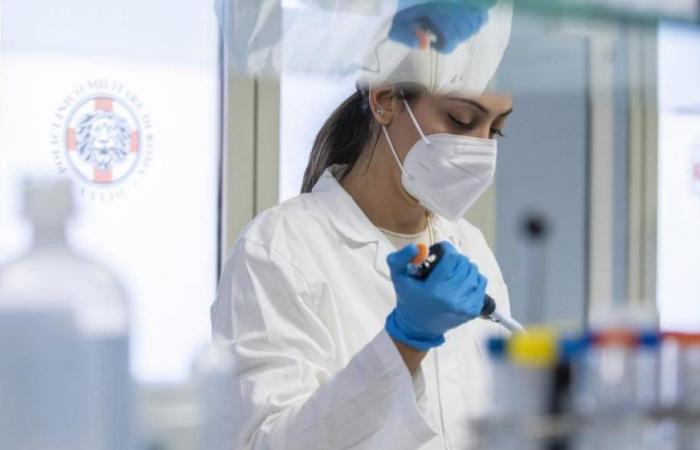We’re talking about Covid again. Although in reality the virus, even here, has never disappeared as hoped, also losing those seasonal characteristics that it was thought it might have. Even with a very limited number of swabs, so we are talking about a substantial underestimation, in the week between 6 and 12 June 1802 cases were identified, with 17 deaths, out of 96,568 swabs. Compared to the previous week cases have increased and also the test positivity rate, which reached 1.9% compared to 1.8 the previous week. This is stated by the official figures from the Ministry of Health reports.
In the meantime, however, the virus continues to evolve. And the KP.3 variant in the USA represents the viral profile that is most worrying. Also because it is progressively taking the place of its predecessors, in a path that is part of the same evolutionary and adaptive nature of the virus, which were already very widespread. KP.3, in particular it is a variant of the so-called “Flirting”. In short, it is the “little sister” of other strains of the same family.
KP.3, what are the characteristics
KP.3 is only the latest variant of the trio that constitutes the so-called “Flirt” group, composed of KP1.1, KP.2 and KP.3. Observed only for a short time, in the USA, according to data from the CDC (Centers for Disease Control) in Atlanta, it is already gradually taking over from the previous ones, with their subvariants. And at great speed, after the others took the place of their “progenitor” (obviously in viral terms) JN1. While there is also talk of variants for KP.3, in any case, it is believed that about a quarter of new infections in the USA are linked to this strain.
What changes compared to the previous ones? Basically we need to go over some notions of viral biology that we were used to in recent years. It is fundamental for the virus to be able to attach to cells and penetrate them, thanks to a specific receptor. This action is ensured for Sars-CoV-2 by S or Spike protein. This step is fundamental for viral replication and the appearance of symptoms of the infection.
With KP.3 they were observed three mutations: one is shared with KP.2, and has been called S:V1104L. The other two (original) are S:F456L and S:Q493E. At the moment it is not known what characteristics the virus can offer in terms of its ability to infect human beings but it is reasonable to think that they could be “winning”, given also the rapidity with which this strain is spreading Invisibly “overthrowing” the previous one, which loses out in terms of “findings” in the samples that are tested in the laboratories.
What can we expect
Let’s be clear. We are talking about evolution that must be evaluated. And this is the task of researchers, as well as public health. So even making predictions is wrong. One fact remains: compared to JN.1 variants marked by KP appear more contagious. This can be observed in terms of symptoms which in some way, again according to what the Atlanta CDC reports, remain the classic general signs such as fever, headache, breathing difficulties in the most serious cases, sometimes even hyposmia , that is, the decline in smell and ageusia, with loss of taste. But it should not be forgotten that cases with gastrointestinal manifestations have also been observed, such as abdominal pain, diarrhea and vomiting.
It must be said that based on this definition, with extremely varied and different symptomsit is very difficult to clinically recognize a case of Covid, and therefore the appearance of a sign and symptom typical of variants of the KP family is not to be expected.
Chapter prevention. It is to be expected that previous vaccinations, as well as any natural infections, may still be useful for limiting the risks of more complex infection patterns linked to the “Flirt” variants. But we are only in the field of hypotheses. And news on this front is expected for the next autumn season. In any case, it is hoped that thevaccine update which should consider the JN.1 “family” and the descendant strains can help protect in the future also from the risks related to KP strains, obviously including KP.3.






